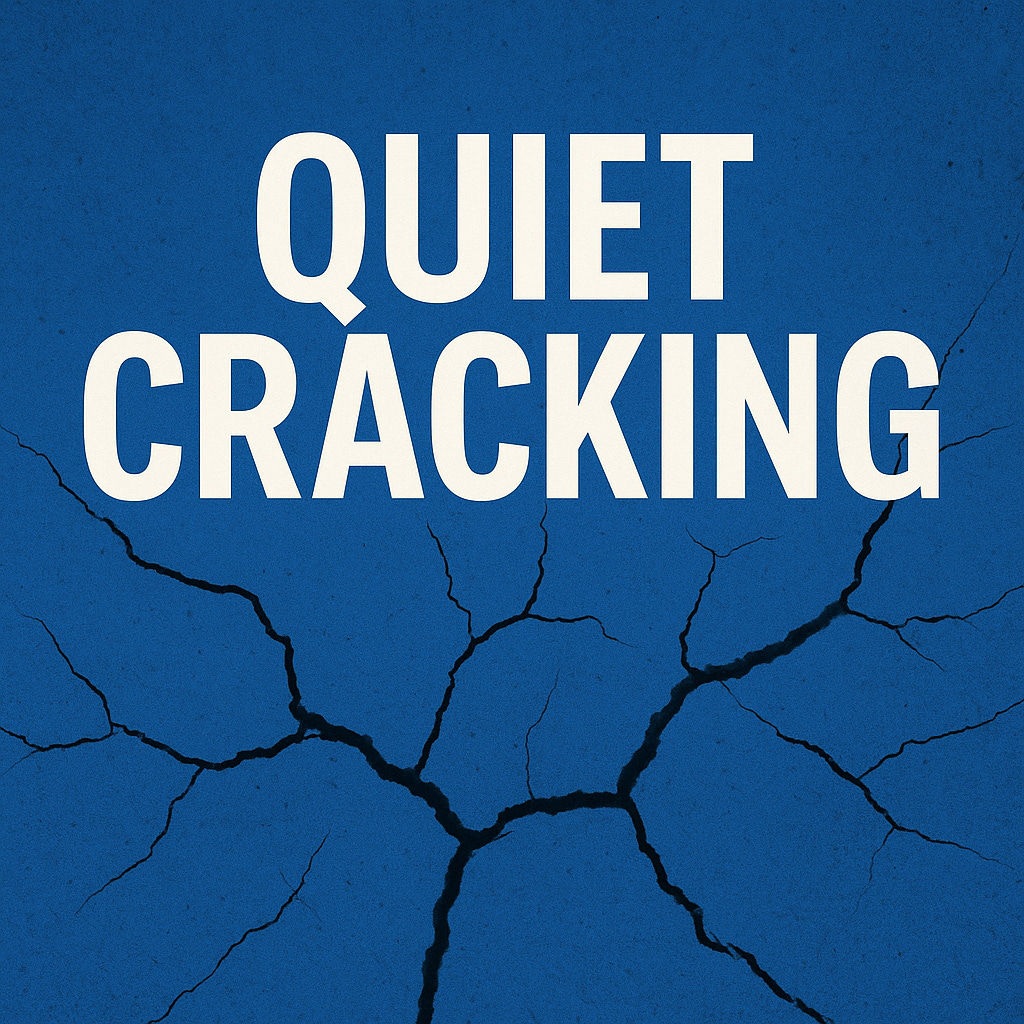Remember the Great Resignation? Workers hopped from job to job with abandon, cashing in on leverage. Now we're living in the opposite of a rom-com: instead of fear of commitment, we've got fear of leaving.
Today, the pendulum has swung. Instead of job hopping, many of us are job hugging, clinging to roles that drain us because leaving feels too risky. This is what experts now call "quiet cracking."
Unlike burnout, which eventually flames out in visible collapse, quiet cracking is a slow, silent struggle. Employees keep showing up, but motivation and morale quietly crumble.
According to a recent survey from TalentLMS, 54% of employees say they experience some level of quiet cracking. One in five admit it happens "frequently or constantly." What drives it? The same survey found that workers who haven't received training in the past year are 140% more likely to feel job insecurity, and nearly half of those who report cracking also say their managers don't listen to them.
"Quiet cracking is when workers show up, they do their job, but they struggle in silence while they do it." — Frank Giampietro, EY Americas Chief Well-Being Officer (Inc.)
Kevin Ford, who spent decades in IT before retiring, described his experience this way: "It starts eating at you. Day after day, you feel trapped. Over time, it wrecked my work performance - you can't live like that."
What Leaders Miss
For organizations, the hidden costs are real. Disengaged employees aren't innovating or building culture. They're simply surviving. And survival is not loyalty. Mistaking job hugging for commitment is a dangerous blind spot.
Nikhil Arora, CEO of Epignosis, warns: "Unlike burnout, quiet cracking doesn't always look like poor performance. It's about employees who feel unheard or stuck, even as they keep showing up."
What Can Help
Experts consistently point to a few levers:
Clarity and expectations. Workers crack when workloads are high and roles are unclear.
Training and growth. Access to learning opportunities dramatically lowers the risk of quiet cracking.
Real recognition. Feeling valued and heard matters as much as pay.
Conversations that matter. As Giampietro says, spotting changes in behavior and asking "How can I help?" may be the single best intervention.
The Bottom Line
Quiet cracking thrives when people feel they can't move on. Debt, mortgages, kids, healthcare, fear of change: all the real stuff of life keeps them hugging the job. But staying in a corrosive situation takes its toll.
The hard truth is that neither employees nor organizations can afford to let quiet cracking linger. Workers need the courage to speak up, and leaders need the humility to listen. Because once a crack spreads far enough, something's going to break, and it won't be quiet.


